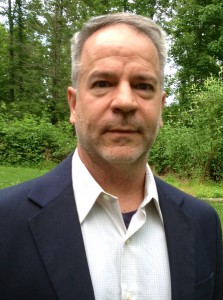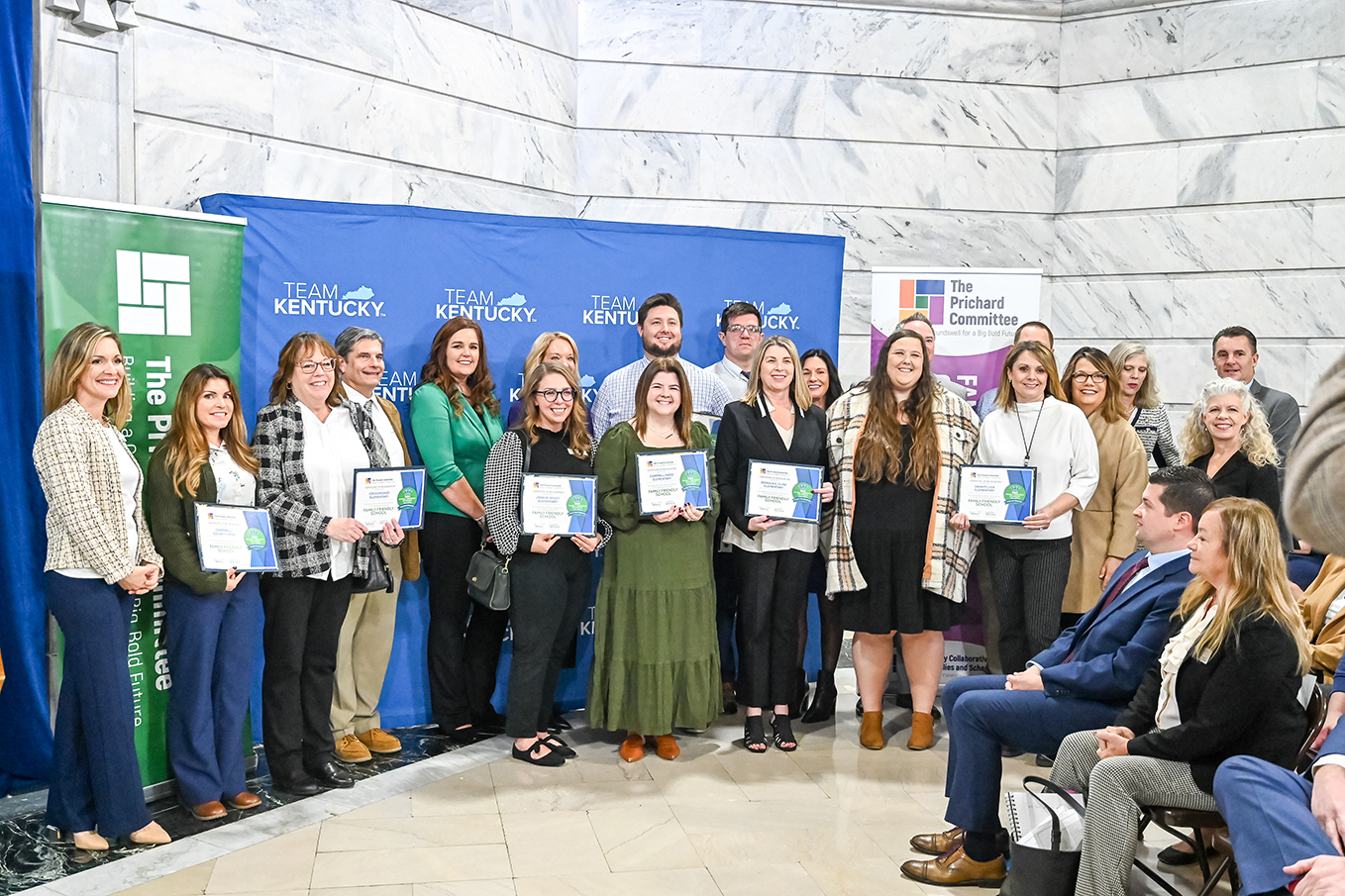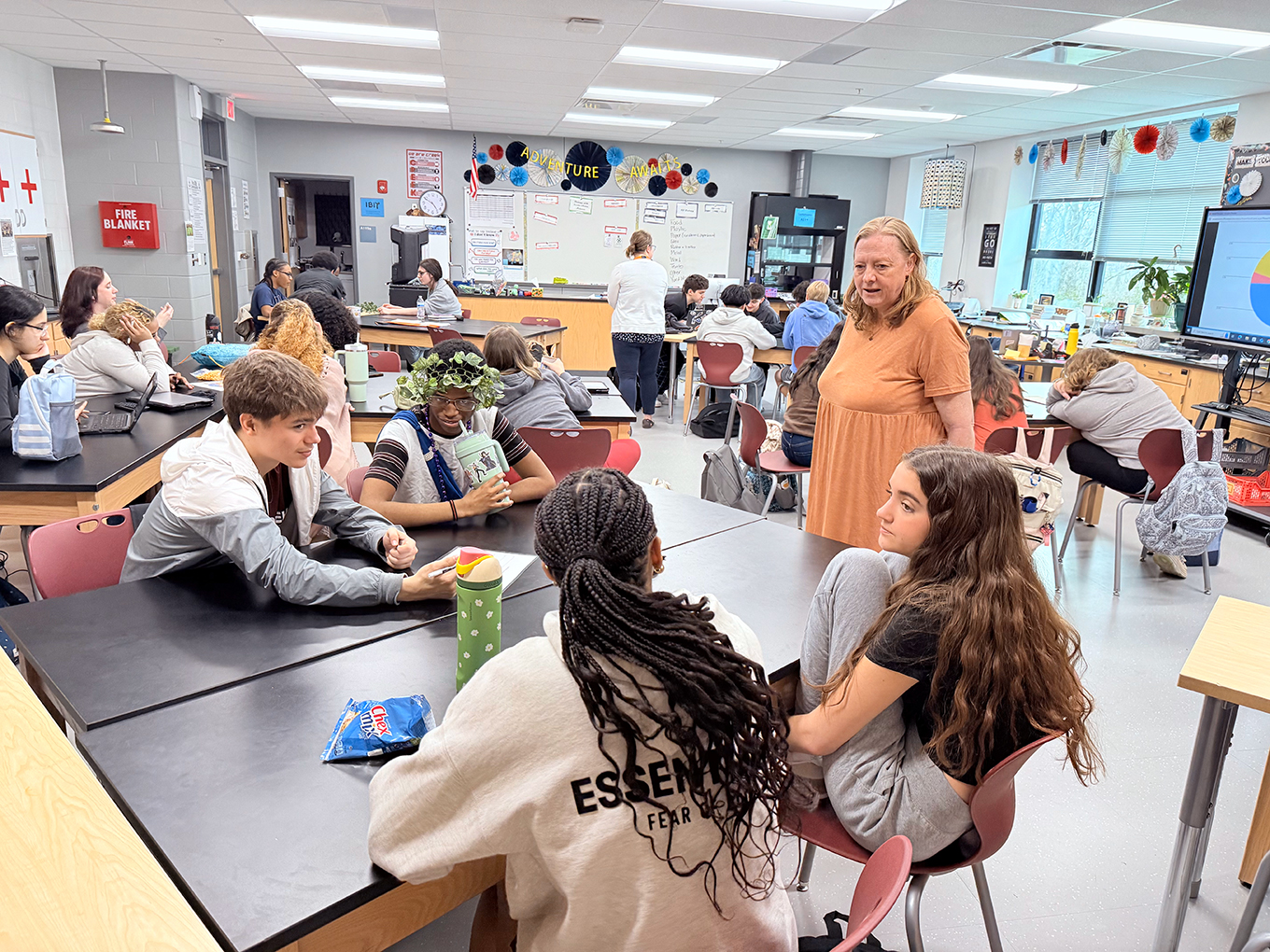
Randy Barrette
By Randy Barrette
randy.barrette@menifee.kyschools.us
Across the country each year, one week is set aside for International Education Week. This joint initiative of the U.S. State Department and the U.S. Department of Education (USED) is part of a larger effort to promote school programs that prepare K-12 students for the global environment, one that both departments hope will be sustained year-round. This year’s events take place this week.
As K-12 public-school teachers in Kentucky, we are asked to support our students with relevant content and instructional design that allow them the space and time to shape their global paradigm. Two recent statements from our educational leaders have declared the preparation of globally competent graduates an integral part of the College- and Career-Ready (CCR) formula. I suggest you read Commissioner Holliday’s Blog from June 13, and the Kentucky Board of Education’s Aug. 7 resolution; both articulate global readiness as an important variable in the CCR mission.
What if we didn’t?
How does a student gain 21st-century skills such as cross-cultural understanding, the awareness and ability to collaborate using technology tools, or a paradigm through which to interpret the impact of international events on the global economy? What if a child has no contact with a person from another country or culture? What if he does not have Internet access at home, or if the Internet is used for non-educational purposes? What if her teachers, all the way from K-12, do not take advantage of what technology offers? What if they used technology only to accomplish tasks that could otherwise have been done with books, papers and pencils? Does this child graduate prepared for college, the military or the skill-based global job market? Would that child be prepared to interact with the diversity found in today’s social and economic realities?
The answer is that schools big and small, rural and urban, rich and poor operate under the same 21st-century model of instructional design and integrate technology effectively. The answer is that professional educators do more than understand the changing nature and role of the teacher and classroom. We must act now to make this transition to a classroom that is not bound by space and time. We do this not just for our own professional viability, but for all of our students, especially those who would otherwise not be exposed to such opportunity.
Let me give you an example. A 4th-grade teacher decided to introduce new math concepts through a collaborative project. She created an account using Collaborations Around the Planet (CAP) to locate partner teachers and classrooms in France and Haiti. Through this collaborative, students in all schools measured the amount of energy they consumed daily, the times of the day they ate, and the foods that provided that energy. They shared this data in a Google document, enabling students in the partner school to use that to make calculations. They compared and contrasted diets using mathematics. They met later, using Google Hangouts – with linguistic help from students of French in the district’s high school – to discuss the topic, to describe the various foods to their partners, and to ask questions.
Classroom relevance
Embedded throughout the Professional Growth and Effectiveness System’s (PGES) Kentucky Framework for Teaching are two themes, Effective Technology Integration and Cultural Competence, that we are asked to weave into our curriculum, as well as into our school’s Continuous Instructional Improvement Technology System (CIITS) plan. The above example highlights only one of the many ways teachers and schools can combine technology and global competency. In fact, in Domain 1 of the PGES we read that we “must know how our content and discipline have evolved into 21st century, incorporating such issues as global awareness and cultural diversity, as appropriate.” It is possible for any teacher – no matter what grade or content area – to design instruction that allows technology to enhance the teaching and learning process, and leverage that process to help our students – even at a young age – to develop an awareness for other cultures in a collaborative context.
Four years ago, my principal told me I could use 30 minutes per day for a World Cultures class. That was a challenge I enthusiastically accepted. The first thing I did was to establish a partnership with the Global Nomads Group (GNG). GNG operates, among other programs, the Global Citizens in Action (GCA) program that pairs schools in different parts of the world, then facilitates monthly interactive video conferences and project-based learning opportunities. It provides a solid curriculum aligned to state and national standards, professional development, technology support and assessment tools. Its programs link students in Canada and the United States with peers in the Middle East, North Africa, South and Central Asia; they cross the toughest of borders, be they physical or cultural or imagined. This year we are expanding through a new partnership with another agency called Reach The World (RTW). RTW facilitates discussions among three classrooms in our school and Gilman scholars in Japan, Jordan and Argentina.
The relationship with GNG was integral to developing a global competence-based program that allowed my students to develop relationships with peers from the Democratic Republic of the Congo, Afghanistan and, this year, Pakistan. Among other activities, these students have learned entrepreneurship skills by developing plans to sell products made by their peers in the DRC. They designed and interpreted data from a cultural survey to measure their peers’ knowledge of Afghanistan, Islam, world geography, and general cultural knowledge. They created a video for their peers in the School of Leadership in Afghanistan (SOLA) of Kabul and our own school to educate about the roots and impact of stereotypes in our community.
Some first steps for teachers
- Understand the goals and intended outcomes. What is global competency? How does this look as a child progresses from K through 12? On the new KDE Global Competency website you will find matrices, definitions and more.
- Understand that this is not an add-on, or extra work. Combining Global Competency and Technology are characteristics of highly effective teaching practices.
- Be that role model for your school. At least one teacher in every building should take the lead. You don’t have to be a world traveler or an avid follower of global news to get started. You can develop habits for global awareness as your program unfolds. To get started on that habit, follow a daily program of news and in-depth stories such as The World.
- Create an account with the Collaborations Around the Planet (CAP). Even if you don’t participate in a collaborative this first year, you will receive emails inviting you to participate in a variety of projects. You can read and analyze these. You can also go into the CAP website to better understand what other teachers around the world are doing. Once you’ve understood the purpose and process, you could create your own project.
- Reach out and establish a relationship. Begin with a visit to the site of the Global Education Coalition, a network of not-for-profit agencies that facilitates school programs, or to Exchange 2.0 for their programs and advocacy. Be sure to investigate your local resources, including people who have traveled, worked or served in the military internationally. Also, there might be an international partnership in your community through the Chamber of Commerce, Rotary or Lions clubs, or Sister Cities. In addition to the resources becoming available through KDE, the Kentucky World Language Association (KWLA), a statewide association of K-16 educators, has been in the business of world language and international education for 40 years. At the annual KLWA conference this past September, global competency, program review, and the PGES were prominent topics. Talk with your district’s world language teacher or contact a KWLA officer to learn more.
And now, let’s celebrate International Education Week, something Kentucky teachers are beginning to promote and practice year-round.
Randy Barrette is a Spanish and world cultures teacher at Menifee County High School and a Hope Street Group Teacher Fellow.




Leave A Comment